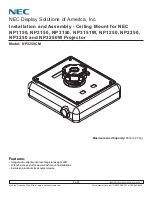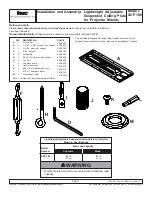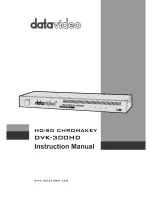
• Make sure that the product is sufficiently ventilated. The plug-in power adapter
and the power bank must be placed where good circulation of air is possible.
Never cover the plug-in power adapter and the power bank.
• When using the device, make sure that the cables are not kinked or pinched.
• Place the device where it cannot fall down or topple over.
• Never use the product immediately after moving it from a cold room into a warm
one. The condensation that forms may damage the product under certain circum-
stances. A power adapter also carries the risk of a potentially fatal electric shock!
Allow the product to reach room temperature before connecting it to the power
supply and putting it into use. In some cases, this may take several hours.
• Working near lead-acid (vehicle) batteries is dangerous! Batteries can emit explo-
sive gases during operation, charging and jump-start! Always wear suitable work
clothing, protective gloves and goggles when working with a battery!
• It is prohibited to smoke or use open fire in proximity to batteries. Avoid spark
formation and flying sparks by all means.
• Never short-circuit the terminal clamps of the connection cable with alligator clips.
• Always remove personal metal objects such as rings, watches, necklaces etc.
before work. These objects may lead to accidental short circuits.
• Follow instructions of battery and vehicle manufacturers. You will find these in-
structions in relevant accompanying documents or the log book of your vehicle.
d) Notes on rechargeable batteries
• The rechargeable battery is permanently installed in the housing of the power
bank and cannot be replaced.
• Never throw the device into a fire. There is danger of fire or explosion due to the
rechargeable batteries!
• The power bank is delivered partially charged. Charge it using the power adapter
for approx. 4.5 hours before its first use, until all the LEDs of the charge status
indicator remain lit. Fully recharge the power bank after each use.
• Charge the battery of the power bank on a regular basis even if the device is not
used (about every 3 months). Otherwise, it may lead to a deep discharge of the
battery, thus making it permanently unusable.
• No initial discharge is required before charging due to the rechargeable battery
technology used.
• If your skin comes into contact with leaking or damaged batteries, you may suffer
burns. For this reason you should use suitable protective gloves.
• Liquids leaking from rechargeable batteries are very chemically aggressive. Ob-
jects or surfaces coming into contact with these liquids could be considerably
damaged.
Individual Parts and Controls
1
2
3
4
5
6
7
8
1 Function button
2 Display of charging status
3 LED light
4 Air cleaner
5 Charging port
6 USB port
7 USB-C™ port
8 Charging cable port
Charging the Power Bank
• The power bank must be switched off. There should be no devices connected to the power
bank and no LEDs on.
• Connect the low-voltage plug of the plug-in power adapter or cigarette lighter charging cable
to the charging port (5).
• Plug the plug-in power adapter into the wall socket or connect the plug of the cigarette lighter
charging cable to your vehicle cigarette lighter.
In many vehicles, the ignition must be switched on in order to supply power to the
cigarette lighter.
When charging via the cigarette lighter, the engine must be running.
• The charge status indicator (2) flashes and displays the current charging status of the internal
rechargeable battery (see table under „Using the Power Bank/General Operation“).
• If all LEDs of the charge status indicator (2) remain lit, the rechargeable battery is fully char-
ged. The max. charging time is 4.5 hours, depending on the residual charge of the built-in
rechargeable battery.
Using the Power Bank
a) General Operation
The device has a smart shutdown function. When it is not being used, it shuts off
automatically.
• Press the function key (1) to switch on the power bank.
Press briefly 1x
the charge status indicator switches on (2)
After a few seconds, the charge status indicator (2) switches off automatically.
Charge status indicator during normal operation:
Charge status indicator (2)
Battery charge status
4 LEDs on
75 - 100%
3 LEDs on
50 - 75%
2 LEDs on
25 - 50%
1 LED on
10 - 25%
No LEDs on
0%
Charge status indicator during charging:
Charge status indicator (2)
Battery charge status
1 LED flashing
0 - 25%
2 LEDs flashing
25 - 50%
3 LEDs flashing
50 - 75%
4 LEDs flashing
75 - 100%
all 4 LEDs steady on
Battery fully charged
b) Operating the Built-In LED Light
• Press the function key (1) briefly 2x to activate the built-in LED light (3).
• Once the LED light (3) is on, you can select the different functions of the LED light (3) by
briefly pressing the function key (1) repeatedly:
Continuous Light
Flashing Light
SOS Signal
Light Off
c) Operation of the Air Cleaner
• Press and hold the function key (1) to switch the built-in air cleaner (4) on or off.
• A green LED indicates that the air cleaner is in operation.
d) Operation/Charging of USB Devices
The two USB ports (6 and 7) have an output voltage of 5 V/DC and offer a load capacity of 4.6
A (total capacity, distributed between both outputs).
• Turn off the devices you want to connect before connecting them to the power bank.
• Connect the USB port of the device to the USB port (6) of the power bank.
• If you want to connect a device with a USB-C™ interface, connect it to the USB-C™ port (7).
• Press the function key (1) briefly to switch on the device.
• If necessary, turn on your USB device as well,.
• After the charging process, disconnect the device to be charged again. The power bank turns
off automatically after a few seconds.
e) Jump-Start
When used as a jump starter, the power bank should always be fully charged in
order to provide the greatest possible support.
Never use the power bank as a jump starter if the charge status indicator (2) dis-
plays less than 3 LEDs.
The jump-start function turns off automatically after about three seconds.
• Switch off the ignition and all power consumers in the vehicle.






























